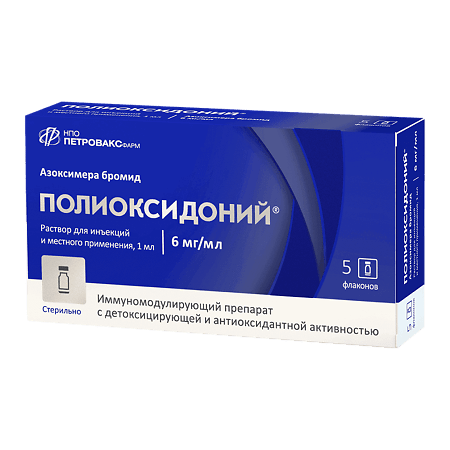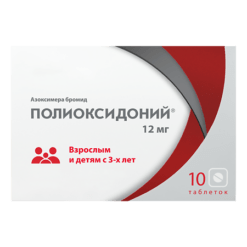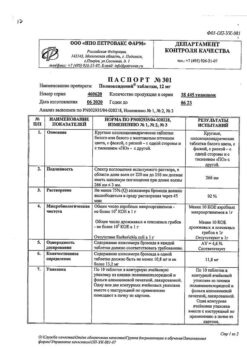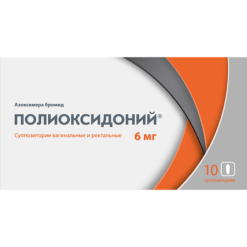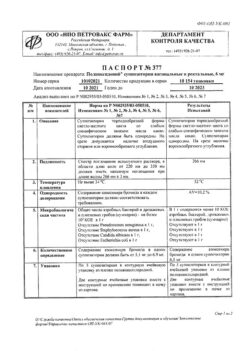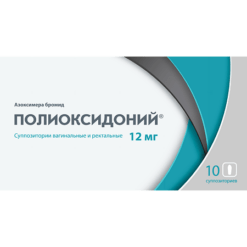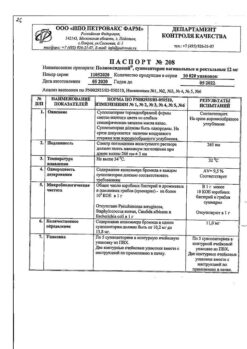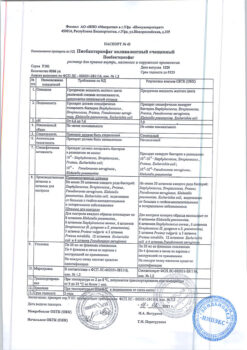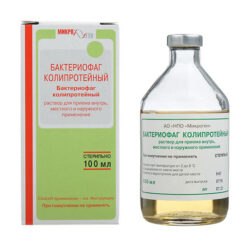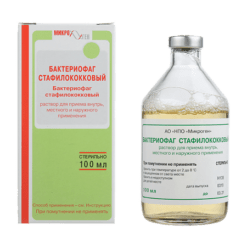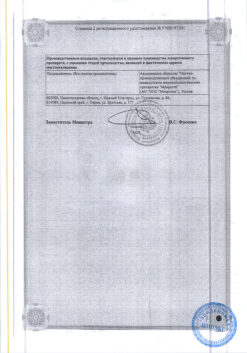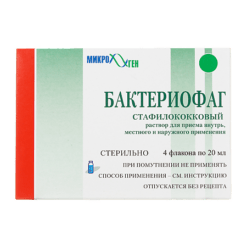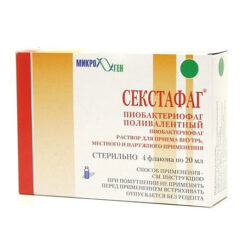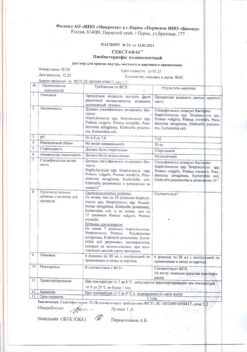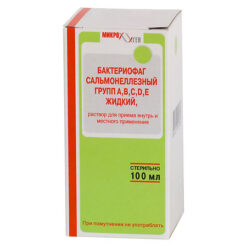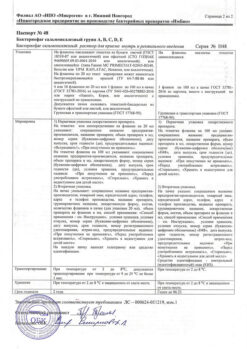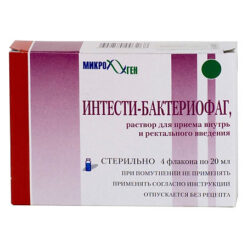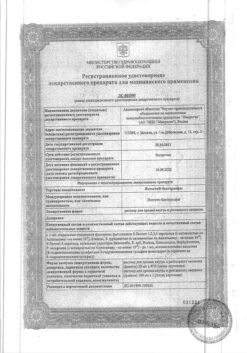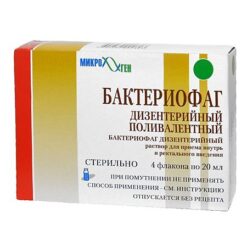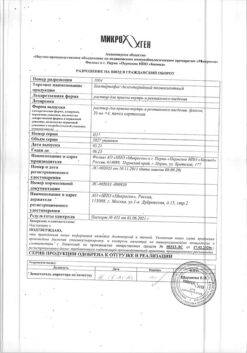No products in the cart.
Polyoxidonium, 6 mg/ml 1 ml 5 pcs
€1.00
Out of stock
(E-mail when Stock is available)
Description
Pharmacotherapeutic group:
immunomodulatory agent.
ATX code: [L0Z]
Pharmacological properties
Pharmacodynamics
Azoximer bromide has a complex action: immunomodulatory, detoxifying, antioxidant, moderate anti-inflammatory.
The basis of the mechanism of immunomodulatory action of Azoximer bromide is direct effect on phagocytic cells and natural killer cells as well as stimulation of antibody formation, synthesis of interferon-alpha and interferon-gamma.
The detoxifying and antioxidant properties of Azoximer bromide are largely determined by the structure and high molecular weight nature of the drug. Azoximera bromide increases the body’s resistance to local and generalized infections of bacterial, fungal and viral etiology. It restores immunity in conditions of secondary immunodeficiency caused by various infections, injuries, complications after surgical operations, burns, autoimmune diseases, malignant tumors, chemotherapeutic agents, cytostatics, steroid hormones.
A characteristic feature of Azoximer bromide when applied topically (intranasally, sublingually) is the ability to activate the body’s early defense factors against infection: the drug stimulates the bactericidal properties of neutrophils, macrophages and increases their ability to engulf bacteria, increases bactericidal properties of saliva and mucous secretions of the upper respiratory tract.
Azoximera bromide blocks soluble toxic substances and
micro particles, has the ability to remove toxins, salts of heavy metals from the body, inhibits lipid peroxidation through both interception of free radicals and through the elimination of catalytically active Fe2+ ions. Azoximer bromide reduces the inflammatory response by normalizing the synthesis of pro- and anti-inflammatory cytokines.
Azoximera bromide is well tolerated, has no mitogenic, polyclonal activity, antigenic properties, has no allergic, mutagenic, embryotoxic, teratogenic and carcinogenic action. Azoximer bromide
is odorless and tasteless, has no local irritant effect when applied
to the mucous membranes of the nose and oropharynx.
Pharmacokinetics
Azoximera bromide is characterized by rapid absorption and high rate of distribution in the body. Maximum concentration of the drug in blood when administered intramuscularly is reached after 40 minutes. The half-life for different ages is from 36 to 65 hours. Bioavailability of the drug is high: more than 90% when administered parenterally.
Azoximer bromide is quickly distributed to all organs and tissues of the body, penetrates through the blood-brain barrier and blood-ophthalmic barrier. There is no cumulative effect. In the body Azoximer bromide undergoes biodegradation to low-molecular oligomers, excreted mainly by the kidneys, with feces –
not more than 3%.
Indications
Indications
It is used in adults and children from 6 months of age for the treatment and prevention of infectious and inflammatory diseases (viral, bacterial and fungal etiology), in acute and remission stages.
To treat adults (in combination therapy):
For the treatment of children over 6 months (in the complex therapy):
For prevention (monotherapy) in children over 6 months and adults:
Active ingredient
Active ingredient
Composition
Composition
Active ingredient: azoximera bromide 3 mg or 6 mg;
Excipients: mannitol 0.9 mg, povidone K 17 0.6 mg (for 3 mg dosage); mannitol 1.8 mg, povidone K 17 1.2 mg (for 6 mg dosage).
How to take, the dosage
How to take, the dosage
Methods of administration of Polioxidonium®: parenteral, intranasal, sublingual.
Methods of administration, dosing regimen, necessity and frequency of subsequent courses of therapy are chosen by a physician depending on the severity of the disease and age of the patient.
Preparing solutions for parenteral administration (intramuscular and intravenous):
For intramuscular administration, the drug Polyoxidonium® 3 mg is dissolved in 1 ml
(dose of 6 mg in 2 ml) of water for injection or 0.9% sodium chloride solution. After adding the solvent the drug is left to swell for 2-3 minutes, then stir it with rotary movements without shaking.
For intravenous drip administration Polioxidonium® is dissolved in 2 ml of sterile 0.9% sodium chloride solution. After the solvent is added, the drug is left to swell for 2-3 minutes, then it is stirred with rotating movements. The calculated dose for the patient is sterilely transferred into a vial/packet with 0.9% sodium chloride solution.
The prepared solution for parenteral administration must not be stored.
Preparing solution for intranasal and sublingual administration:
For children, the 3 mg dose is dissolved in 1.0 ml (20 drops), the 6 mg dose in 2.0 ml (40 drops)
(one drop (0.05 ml) of prepared solution contains 0.15 mg of the drug);
For adults, a dose of 6 mg is dissolved in 1.0 ml (20 drops) of distilled water,
0.9% sodium chloride solution or boiled water at room temperature.
Parenterally (intramuscularly or intravenously): The drug is given to adults in dosages of 6-12 mg 1 time daily, every other day or 1 or 2 times a week depending on the diagnosis and disease severity.
In acute viral and bacterial infections of ENT organs, upper and lower respiratory tracts, gynecologic and urologic diseases: 6 mg daily for 3 days and then 10 injections once a day.
In chronic recurrent infectious-inflammatory diseases of various localizations, bacterial, viral and fungal etiology, in the acute stage: 6 mg every 5 injections daily, 2 times a week with 10 injections.
In case of acute and chronic allergic diseases (including pollen allergy, bronchial asthma, atopic dermatitis) complicated by bacterial, viral and fungal infection: 6-12 mg, 5 injections.
In rheumatoid arthritis complicated by bacterial, viral and fungal infection, against the background of long-term immunosuppressant therapy: 6 mg every other day
5 injections, then 2 times a week for a course of 10 injections.
In generalized forms of surgical infections: 6 mg daily for 3 days, then every other day for a course of 10 injections.
For activation of the regenerative processes (fractures, burns, trophic ulcers): 6 mg for 3 days, then every other day for 10 injections.
For the prevention of postoperative infectious complications: 6 mg every other day for 5 injections.
In case of pulmonary tuberculosis: 6 mg 2 times a week for a course of 20 injections.
In cancer patients:
– before and against the background of chemotherapy to reduce the immunosuppressive, hepato- and nephrotoxic effects of chemotherapeutic agents: 6 mg every other day for a course of
10 injections; further the frequency of administration is determined by the doctor depending on tolerance and duration of chemotherapy and radiation therapy;
In order to prevent immunosuppressive effects of the tumor, to correct immunodeficiency after chemotherapy and radiation therapy, after surgical removal of a tumor, long-term use of Polioxidonium® (from 2-3 months to 1 year) 6 mg 1-2 times a week is indicated. No cumulation effect, toxicity or habituation are observed when prescribing a long course.
Intranasally, 6 mg daily (3 drops in each nostril 3 times a day – for 10 days):
– for the treatment of acute and exacerbations of chronic infections of the ENT organs;
– to enhance the regenerative processes of mucous membranes;
– for the prevention of complications and relapses of chronic diseases;
– for the prevention of flu and acute respiratory infections.
Methods of administration and doses in children
Methods of administration of Polioxidonium®: parenteral, intranasal and sublingual. Methods of administration are chosen by a doctor, depending on the severity of the disease and the age of the patient.
Parenteral (intramuscular or intravenous): should be administered in children from 6 months old at the dose of 0.1-0.15 mg/kg daily, every other day or twice a week for the course of 5-10 injections.
Intranasally and sublingually: daily in a daily dose of 0.15 mg/kg for up to 10 days.
The drug is administered in 1-3 drops in one nasal passage or under the tongue at intervals of at least 1-2 hours, in 2-3 doses per day.
One drop (0.05 ml) of the prepared solution contains 0.15 mg of the drug.
The calculation of the daily dose for intranasal and sublingual administration is shown in Table 1.
Table 1. Calculation of daily dose of Polioxidonium® for intranasal or sublingual administration in children.
Child weight
The number of
drops per day
5 drops
5 drops
10 kg
10 drops
15 kg
15 drops
20 kg
20 drops
Interaction
Interaction
Special Instructions
Special Instructions
If an allergic reaction develops, discontinue Polyokidonium® and consult a physician.
If it is necessary to stop taking Polyokidonium® , the drug can be stopped immediately, without gradually decreasing the dose.
If another dose of the drug is missed, subsequent administration should be done as usual as indicated in these instructions or as recommended by the physician. The patient should not administer a doubled dose to compensate for missed doses.
Do not use the drug if there are visual signs of failure (defective packaging, discoloration of the powder).
In case of pain in the injection site the drug is dissolved in 1 ml of 0.5% procaine (novocaine) solution if the patient has no hypersensitivity to procaine (novocaine). When administered intravenously (drip) the drug should not be dissolved in protein-containing infusion solutions.
Impact on ability to drive vehicles and mechanisms
Polyoxidonium® usage does not affect the ability to perform potentially dangerous activities requiring high concentration and quick psychomotor reactions (including driving vehicles and operating moving mechanisms).
Contraindications
Contraindications
With caution
Side effects
Side effects
The following general and local reactions occurred during use of Polioxidonium®:
Not common (â¥1/1,000 to <1/100): soreness, redness and thickening of the skin at the site of injection.
Very rare (â¥1/10,000): increase in body temperature to 37.3 °C, mild restlessness, chills within the first hour after injection, allergic reactions.
Overdose
Overdose
Pregnancy use
Pregnancy use
The use of the drug Polioxidonium® is contraindicated in pregnant and breastfeeding women (no clinical experience of use).
In experimental study of the preparation in animals no effect of Polioxidonium® on generative function (fertility) of males and females, embryotoxic and teratogenic effects, no effect on fetal development was found both when administered during pregnancy and lactation.
Additional information
| Shelf life | 2 years. Do not use after the expiration date. |
|---|---|
| Conditions of storage | Store in a dry place at temperatures from 2 to 8 ° C. Keep out of reach of children. |
| Manufacturer | NPO Petrovax Pharm, Russia |
| Medication form | solution for injection |
| Brand | NPO Petrovax Pharm |
Other forms…
Related products
Buy Polyoxidonium, 6 mg/ml 1 ml 5 pcs with delivery to USA, UK, Europe and over 120 other countries.

